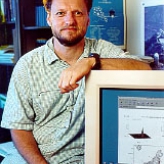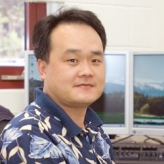Astrophysics (Theoretical)
The astrophysics group at UGA studies a wide range of astrophysical objects and phenomena using a wide range of theoretical methods. We work on stars, star forming regions, and hot and cold gas clouds and supersonic shocks within our Galaxy.
We perform detailed computer simulations of fluid motions and spectral signitures and we compute some of the atomic/molecular parameters needed for spectral simulations.
Researchers
Atomic and Molecular Calculations with Astrophysical Applications
Astronomy relies on observations of light from planets, stars and gas. In order to interpret many observations, we need accurate estimates of atomic and molecular constants, rates, and probabilities. Dr. Phillip Stancil and collaborators at UGA and throughout the world use a fully quantum-mechanical technique in order to calculate such quantities. By comparing the model predictions with observations, it is hoped that it will be possible to predict the abundance of lithium in cool dwarf stars. Lithium is a particularly important element because the big bang produced lithium. Dr. Stancil and collaborators have tracked the early history of lithium and and its effect on the cosmic microwave background anisotropies.
Exoplanet Formation
Thousands of new worlds beyond our own solar system have been discovered, revealing a hugely diverse exoplanetary architecture.
Exoplanets form in evolving protoplanetary accretion discs. The conditions in these discs decide the final mass and ultimate orbital configuration of their exoplanetary systems, causing diversity in the exoplanet architecture.
As exoplanets form, they leave behind signatures of their formation that can be detected in interferometric mm observations, such as rings and spirals.
In order to try and measure the mass of these forming in planets inside their nascent discs, we typically perform around 100 dusty fluid simulations for each observed system, and try to get the mass this way. However, this is incredibly inefficient, inaccurate, and profoundly limits the regions of parameter space we can explore.
At UGA, I am building a research group that will move past this outdated model by harnessing the power of machine learning and information extraction. We are developing neural network techniques that are widely applicable, user-friendly, and around 10,000 times more computationally efficient than current approaches to determining exoplanet mass in forming systems.
Hot Gas in our Galaxy
Some stars end their lives by blowing up. The explosions, called supernova, blow giant bubbles of hot gas which glow in ultraviolet and X-ray light. When considered as a group, supernova remnant bubbles constitute most of the hot gas in our galaxy. This hot gas affects the ecology of the galaxy in many ways and therefore must be understood in order for the galaxy to be understood. Dr. Elizabeth Raley (former post doc, UGA) and Dr. Robin Shelton (faculty, UGA) have performed 3-dimensional magneto-hydrodynamic computational simulations of supernova remnant bubbles, from which they learned about the bubbles' expansion, movement, effects on surrounding material, observables, and lifetime.
Most of the stars in our galaxy are near the plane of the Milky Way and so most of the supernova bubbles are also near the plane. This makes the outliers that reside above the plane all the more interesting. Few have been seen, but Dr. David Henley (post doc, UGA) and Dr. Shelton recently found another. By carefully examined a suspiciously arc-shaped region of hot, X-ray emitting gas, they found the highest supernova bubble in the Galaxy. Currently, they are sifting through X-ray observations along various other directions in order to find clues about the history and behavior of our Galaxy. Mr. Shijun Lei (grad student, UGA) is also working on X-ray observations of hot gas in our galaxy.
Our galaxy is not alone. There is a collection of satellite galaxies orbiting it and a swarm gas clouds surrounding it. Many astronomers think that galaxies grow by accreting such clouds, which can be as massive as a million times the Sun's mass. However, because the clouds move with speeds of over 100 kilometers per second (200,000 miles per hour), their merging with our galaxy is not a gentle process. Dr. Shelton and her collaborators are simulating the cloud-galaxy collisions.
Recent Publications
Hydrodynamics of Clustered Clouds: Drafting, Survival, Condensation, and Ablation
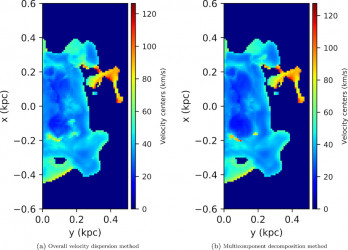
M. Elliott Williams and Robin L. Shelton 2022 ApJ 926 36
The Long Tails of the Pegasus-Pisces Arch Intermediate Velocity Cloud
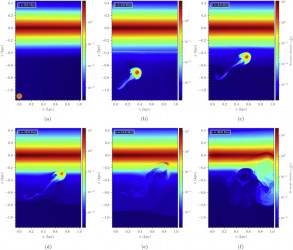
Shelton, R. L., Williams, M. E., Parker, M. C., Galyardt, J. E., Fukui, Y., & Tachihara, K. (2022), ApJ 925 190.
Ultraviolet Line Intensities of Intermediate and High Ions Predicted from Non-equilibrium Ionization Simulations
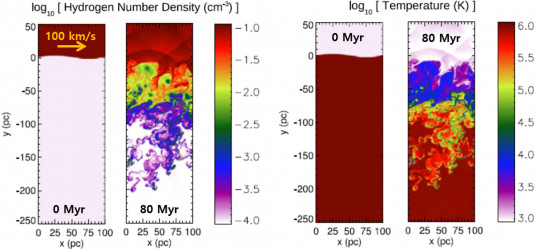
Robin L. Shelton and Kyujin Kwak, the Astrophysical Journal, 2018, vol 866, article id. 34 (15pp)


